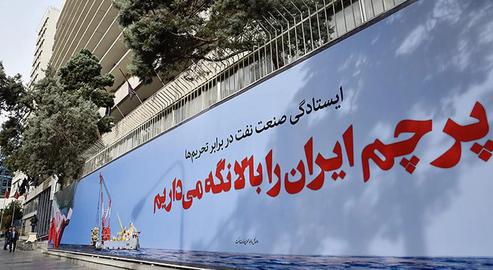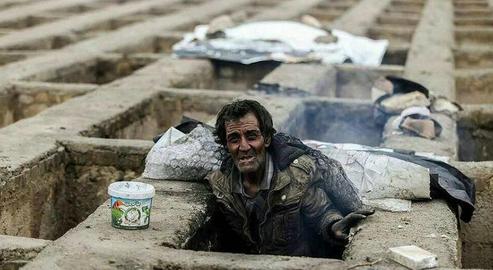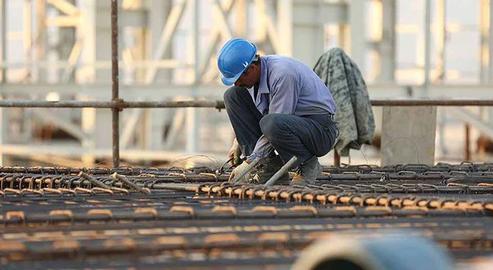The Persian calendar year 1400 begins on Sunday, March 21. It also marks 15 years since the Supreme Leader unveiled a 20-year strategy that would, supposedly, see Iran become an exemplar to the region and the world just a few years from now. What are the prospects for life in Iran in the year 1400, and do they match up with what was promised? Our correspondent examines the facts.
***
Twenty years ago, even the most pessimistic Iranians could not have imagined the country would be in such a critical state on the eve of the Persian calendar year 1400. Back in 2001, Iranians still had hope for the future: a future that many imagined would be stable and sustainable, as society gradually overcame the political obstacles.
When these obstacles were not removed, the crisis of the Islamic Republic became more and more acute as each day passed. The first signs of instability and insecurity appeared in the mid-2000s, just as Supreme Leader Ali Khamenei thought he had seized a monopoly on power in Iran with the appointment of his then-beloved president, Mahmoud Ahmadinejad. The country’s foreign and domestic policy then headed in a direction desirable to its leader: misadventure and bullying in the region, and closing all the windows of political, social and economic life to society inside Iran.
At that time, the seeds of Iran's downfall were sown at Khamenei’s office in Tehran's South Palestine Street, in which ambition, escapade and fantasy mingled. With one hand the state aggregated politics and the economy under the military, security and economic institutions, while with the other, it painted a new vision of the country’s future.
Delusional Ambitions
"In 20 years, Iran will be a developed country holding the leading economic, scientific and technological position in the region, and with an Islamic and revolutionary identity, serving as an inspiration for the Islamic world, with constructive and effective interaction in international relations."
These are the first lines of the Islamic Republic’s 20-year Vision, a document outlining the masterplan first announced by Ayatollah Khamenei on November 3, 2005. At the time, the people of Iran were also in the picture.
“Iranian society,” the document went on, “on the horizon of this vision, will have the following characteristics: a [Developed] society... based on Islamic, national and revolutionary moral principles and values, with an emphasis on religious democracy, social justice, legitimate freedoms, the preservation of human dignity and rights, and the enjoyment of social and judicial security. Enhanced advanced knowledge... Safe, independent and powerful ... Enjoying health, welfare, food security, social security, equal opportunities, fair income distribution, strong family institutions, [and] the absence of poverty... a favorable environment. Active, responsible, self-sacrificing, faithful... Achieving the leading economic, scientific and technological position in the region of Southwest Asia... Rapid and continuous economic growth, a relative increase in per capita income and achieving full employment.”
On the contrary, on the threshold of the year 1400, Iranian society is now on the verge of complete collapse. The poverty rate has reached an all-time high, with official figures indicating that over 70 percent of the population are at risk of severe poverty and malnutrition. Per capita meat production has reached its lowest level in half a century. Cooking oil is becoming scarce. Livestock and poultry feed have become a complex issue that has turned into a crisis in its own right, and as a result, queues to buy chicken have formed all over the country. The heaviest and longest period of economic recession has been imposed on the country, while Iranians' per capita income has dropped by one fifth in 10 years. In the past year alone, more than 1.5 million people left the job market due to the recession and coronavirus.
A Dire Situation
Not only is Iran not in the "leading economic position" in the region, but it is among the two or three countries in the world experiencing the worst rates of recession and inflation at the same time. Iran's national currency has now the lowest value in the world. The inflation record has been broken several times over in a decade. Iranians’ purchasing power has decreased significantly compared to that of the people of other countries, as well as their own in the past.
Meanwhile, the fall in the real-terms value of workers' wages is unprecedented even compared to the immediate post-Islamic Revolution period and the Iran-Iraq war. Government employees’ standards of living are not very good either. News of retirees protesting against living conditions is published periodically in official news agencies. They are on the minimum pension permitted by the state.
The employment crisis in Iran is also becoming more serious day by day. In Khamenei's 20-Year Vision Iran was to achieve "full employment" by the early 1400s. But Iran has not even come close to this, and in fact the situation has worsened. Property prices have simultaneously risen to such an extent that the average waiting period for buying a home is now more than a century, whereas 20 years ago, taking into account average savings and house prices, the waiting period was about 12 years.
In Iran in 1400, not only is buying a house impossible, but it has become impossible for the middle classes to so much as rent a house in mid-town or even low-income neighborhoods. This situation has led to an escalation of marginalization in Iran and has had dire social consequences.
The Lack of Freedom
In the imagination of the Supreme Leader of the Islamic Republic, Iranians were supposed to enjoy "social justice, legitimate freedoms, the preservation of human dignity and rights, and social and judicial security", which they do not. Instead, the judicial and security apparatus strives to crack down on legitimate personal and social freedoms, while there is no security in society whatsoever. The rate of all kinds of recorded social harms is extremely high: official statistics show an increase in violence while murder, suicide, suspected deaths, theft and addiction are also on the rise.
The health and wellbeing situation, at least, should have been sustainable by now. But Iran in 1400 is severely afflicted by the coronavirus pandemic, having rapidly become one of the countries with the highest rates of infection and mortality in the world after its first cases were detected – but not reported – in January 2020. The state continues to pump out conspiracy theories about Covid-19 while a serious attempt at vaccinating the population has yet to get under way.
The distance between reality and what was outlined in the 20-year Vision is immeasurable. In the five years that remain, it will be impossible to traverse this distance between two opposite worlds: one on the ground, the other an illusion. The reality of Iran in 1400 is a society trapped in the black hole of the Islamic Republic and the delusions of its leaders.
Related coverage:
Coronavirus Variant Runs Rampant in Iran Ahead of New Year Holidays
Hit Hard by the Pandemic Recession, Many Iranian Day Laborers Turn to Scavenging
No Money for Electricity but Enough Cash to Reward Terrorism
Rouhani is Either Lying or Ignorant about Poverty in Iran
All Is Well – Except that We’re Poor and the Economy Is Bankrupt
visit the accountability section
In this section of Iran Wire, you can contact the officials and launch your campaign for various problems



























comments